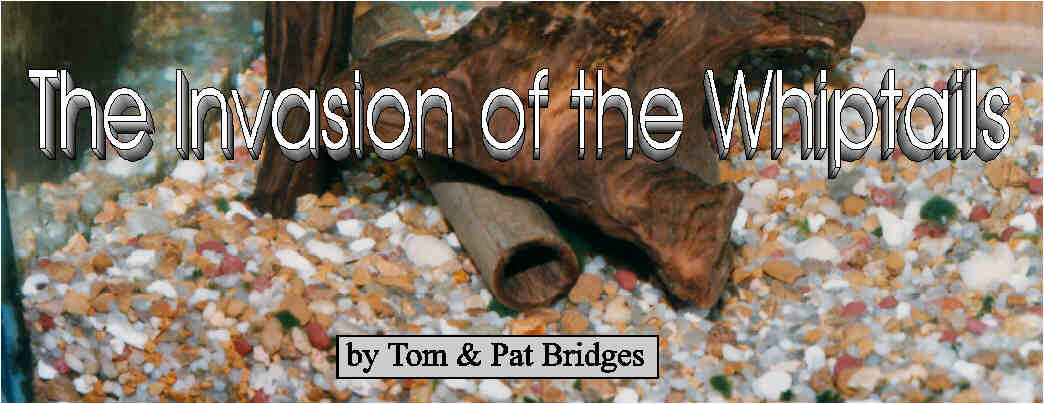 |
| If you read our article in the April edition of The Scat you know that we were surprised by a spawning of what some call "whiptail cats" but are better know to us as twig cats. For many
years we have kept the small, well camouflaged, algae eaters that we call
Whiptails. They're Rineloricaria 'parva'. |
Three of them were inhabiting a ten gallon tank with undergravel filtration and a piece of driftwood. In January we noticed that two of them were chasing each other around somewhat aggressively. |
A close examination, (and I do mean close because
these cats almost disappear on a natural gravel bed), determined that both
the chaser and the chasee had a tiny forest of bristles on each pectoral
fin. (The pectorals are those fins that look a little like wings on an airplane.)
They were males. The third whiptail had no bristles and so was probably a
female.
We did four things. |
||
| The parva is in quotes because it's probably now a synonym for fallax if you follow Baensch. Parva means small and, since the fish never grow much over 4 inches long, it seems very appropriate. | ||||